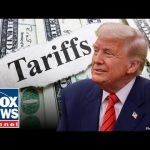The Trump administration is making strides toward brokering a ceasefire in the ongoing conflict between Russia and Ukraine, with cautious optimism emerging from recent diplomatic efforts. President Donald Trump has proposed a 30-day truce, which Ukraine has agreed to, but Russian President Vladimir Putin remains hesitant, raising numerous conditions and questions. While the U.S. and its allies view this as a critical opportunity to halt hostilities, Russia’s reluctance underscores the complexities of achieving lasting peace in the region.
The ceasefire proposal, backed by the United States, seeks to pause fighting along the entire 1,800-mile frontline while allowing for potential extensions. Ukrainian President Volodymyr Zelenskyy has expressed readiness to implement the truce, emphasizing that it would include measures such as halting missile strikes and returning Ukrainian prisoners held by Russia. However, Putin has voiced skepticism, questioning how the ceasefire would be enforced and whether it might allow Ukraine time to regroup militarily. His demands include assurances that Ukraine will not join NATO and that Western military aid to Kyiv will cease during the truce.
This hesitation by Russia reflects its broader strategy of leveraging negotiations to secure disproportionate advantages. Putin’s insistence on conditions that would weaken Ukraine’s defense capabilities raises concerns about his commitment to genuine peace talks. Conservatives argue that any agreement must avoid emboldening Moscow or undermining Ukraine’s sovereignty. President Trump’s approach—balancing diplomatic engagement with firm support for Kyiv—has been praised as a pragmatic strategy to hold Russia accountable while pursuing peace.
The Trump administration’s broader geopolitical moves also highlight its proactive stance on global security. Beyond Ukraine, discussions were underway about increasing U.S. military presence near the Panama Canal to counter China’s growing influence in the region. This demonstrates a commitment to safeguarding American strategic interests while simultaneously addressing multiple international challenges. Many view these efforts as essential steps toward reasserting U.S. leadership on the world stage.
Despite the challenges, there is cautious hope that Trump’s reputation as a dealmaker could help bridge the divide between Moscow and Kyiv. National Security Advisor Mike Waltz has emphasized that compromises will be necessary from all sides, but any agreement must prioritize long-term stability over temporary gains. Much depends on whether Putin is willing to engage in good-faith negotiations or continue using diplomacy as a stalling tactic while advancing his military objectives.
As talks progress, conservatives remain steadfast in their belief that peace must not come at the expense of American values or Ukraine’s independence. The Trump administration’s efforts to broker a ceasefire represent a critical test of its ability to navigate complex international conflicts while upholding principles of sovereignty and strength. Whether this initiative succeeds or falters will have far-reaching implications for global stability and America’s role as a leader in resolving international crises.




